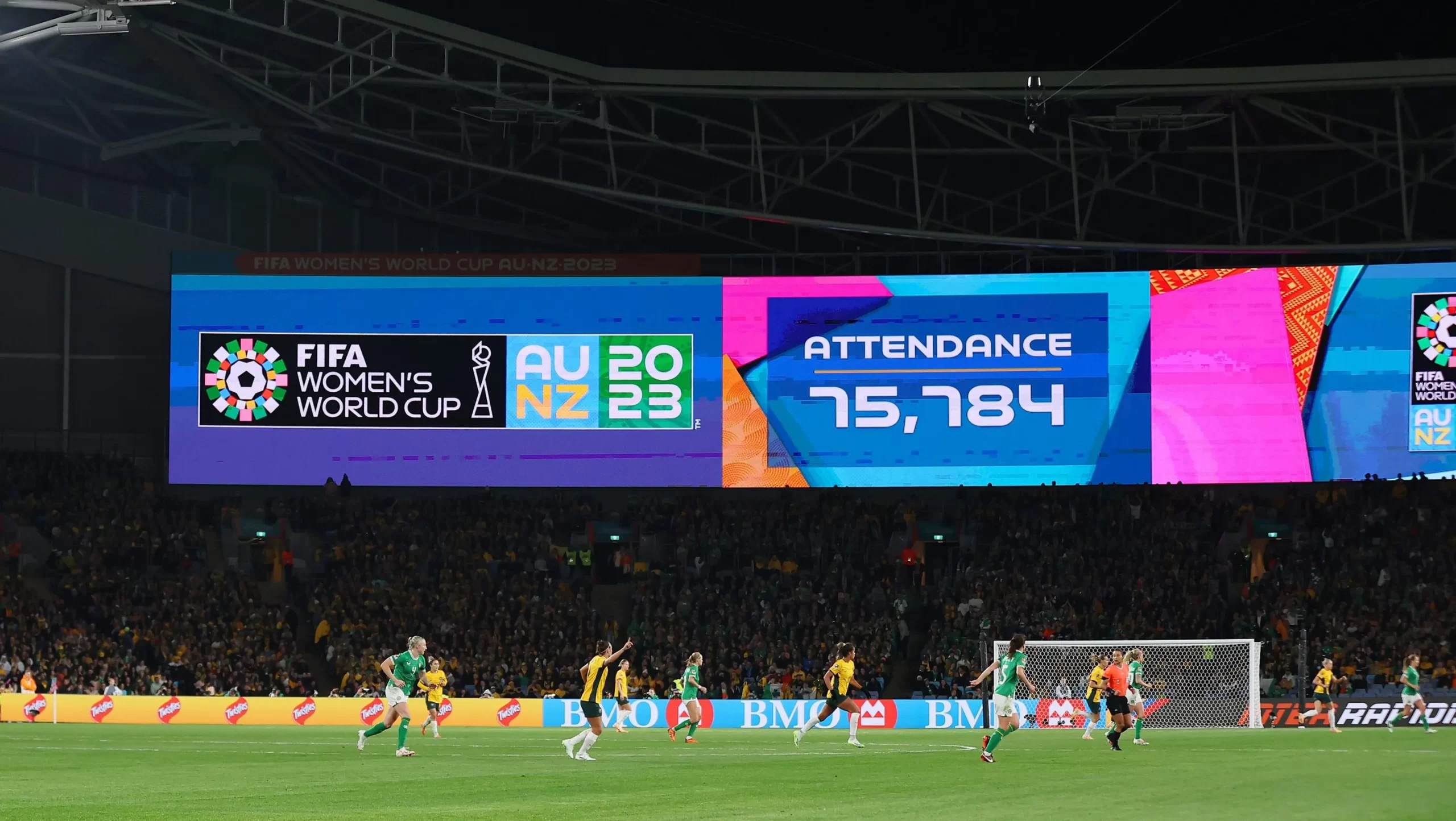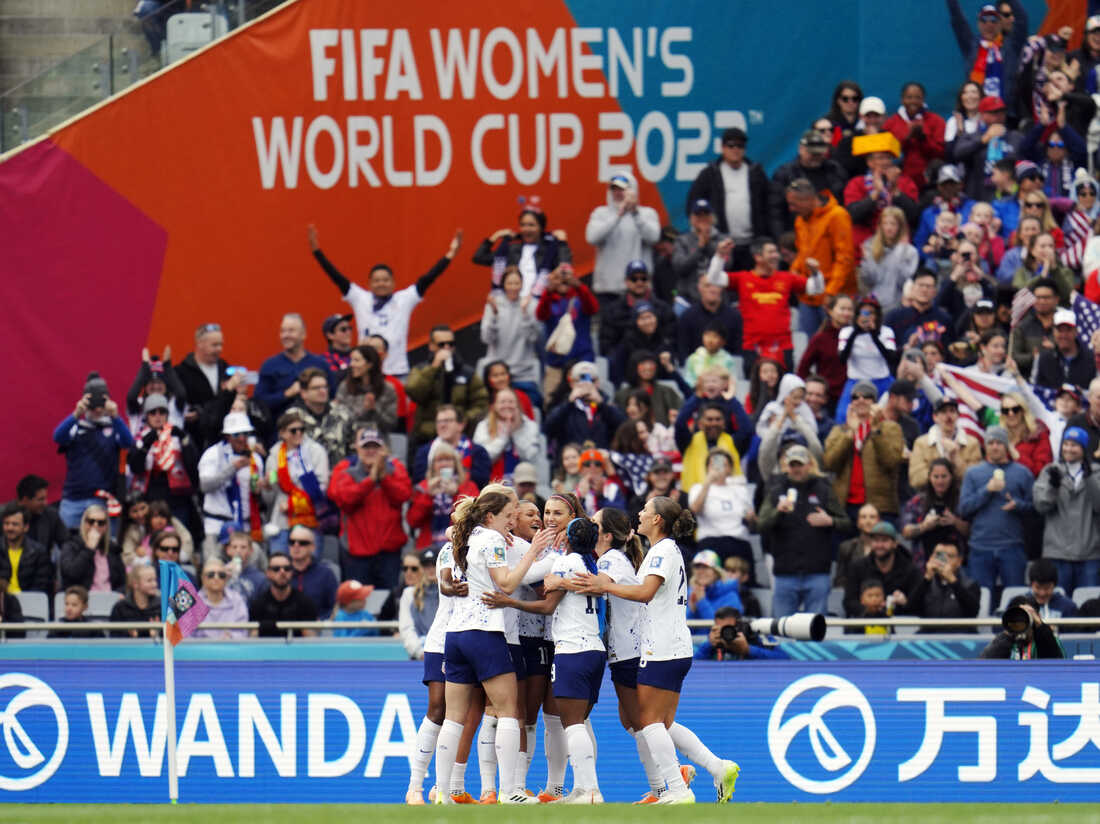Insights from Women’s World Cup 2023: celebrating growth and innovation


Written by Benjamin Frangi
Digital Partnership and Acquisition Specialist at Telecoming
In the last few years, we have witnessed the rise of women’s sports worldwide from the Digital Partnership and Acquisition team of Telecoming. The staging of the significant event, as the FIFA Women’s World Cup 2023 is taking place nowadays, is viciously fighting for the space it deserves. To this point, the aim is to celebrate this growth by diving into the recent developments in women’s football, for our American friends, in terms of innovation.
Before we dig in, let’s explore the innovation of the sport and competition on a broader level by checking out what has been going on regarding the competition’s format, marketing and partnerships strategy.
The recognition of a rising audience
Following the USA, the sport’s popularity amongst women reached mature football landscapes such as Spain, where Aitana Bonmati rules the Catalan for FC Barcelona together with “La Reina” Alexia Putellas. Still, France, England and Italy have shown a significant interest in developing female talent to compete against the USA’s dominance. In Asia and LATAM, there is still a road to be paved. However, like other leagues, the importance of having “idols”, such as the recently retired legend Marta Vieira, drives the sport’s growth amongst the young female athletes in Brazil.
Let’s look at the numbers to justify this growth of interest and audience. Rightsholders are capitalizing on the increased interest in women’s sports, as evidenced by examples like last year’s TV deal between England’s WSL and the BBC and Sky Sports. The response has been significant: during the first three months of the 2021/22 WSL season, per-game viewership was up more than 500% under this new broadcast deal.
Let’s look too at some significant KPIs that further justify this booming movement. According to Statista, ahead of the 2023 FIFA Women’s World Cup being held in Australia and New Zealand, it was predicted to reach two billion viewers worldwide, or in other words, a quarter of the global population. This would represent an increase of around 79% from the previous tournament. On July 27th, the Women’s World Cup hit a record TV viewership for the group stage as nearly 6.42 million people tuned in to the US women’s national team’s 1-1- draw against the Netherlands, making it the most-watched group stage match in the Women’s FIFA World Cup History.

You might be wondering about stadium attendance. According to FIFA, the Women’s FIFA World Cup is on track to be the best attended in the competition’s history as sales top 1.5 million. “We are seeing a surge in support for women’s football, not just in ticket sales, but also in broadcast viewership, fan festival participation and merchandise sales,” said James Johnson, Australia’ football’s Chief Executive. This enthusiasm extends beyond the Women’s World Cup, as evidenced by the last Women’s Champions League semi-final between Barcelona and Wolfsburg, attracting over 90,000 fans at Camp Nou.
Embracing technology to elevate the experience
The impact of innovation in fostering women’s sports growth must be considered. According to PwC’s 7th edition of the “Global Sports Survey,” 50% of participants credit increased media coverage as the most impactful initiative driving the growth of women’s sports. In today’s world, media coverage transcends traditional free-to-air or PPV linear TV broadcasts. Platforms like FIFA +, offering an array of live, archived, and original content related to women’s and men’s football, are vital in positioning emerging sports in the market. Thanks to these platforms, the 2023 Women’s World Cup is poised to break all previous viewership records.
FIFA is leaving no stone unturned in embracing technology to elevate the women’s football experience. The recently launched FIFA Player App targets not just the fans but also the players themselves, providing them access to individual player performance data shortly after each match.
The word “data” is recurring as FIFA also focuses on improving the data sourcing for its teams, media, broadcasters and competition organizers by developing its “Football Data Ecosystem”. The FIFA Football Data Ecosystem is a complex network of several data sources, data processors and distribution layers providing consistent and high-quality data to all relevant stakeholders. The basis is the FIFA Football Language, a blueprint for how FIFA analyzes football.
The FIFA Women’s World commercial structure saw a significant innovation. The competition’s rights were sold individually in many markets for the first time, breaking away from bundled deals with the men’s World Cup and other football competitions. Although FIFA aimed for US $300 million from broadcasting rights bids, they could generate only US $50 million. This was due to broadcasters’ hesitation in meeting FIFA’s higher valuation, given the time zone differences between host Australia and New Zealand and key markets like Western Europe.
While the approach was innovative, it’s evident that more careful consideration and patience are needed as time zone challenges persist for live events. Choosing to host the most prominent women’s football competition far from Western Europe may have been a missed opportunity, considering the sport’s growing attention in the region.

The meteoric rise of women’s football and the FIFA Women’s World Cup showcases the power of innovation in fueling growth. From expanded viewership and record-breaking stadium attendance to technological advancements and strategic marketing, the sport has captured hearts worldwide and secured its well-deserved place in the sporting pantheon.
As women’s football continues to evolve, we can only anticipate further innovations that will push the boundaries and inspire future generations. It is an exciting time for women’s sports, and we eagerly await the next chapter in this thrilling journey of growth and achievement.
Stay tuned!

- Contacto DPO: privacy@telecoming.com
- Finalidad del tratamiento: suscripción al blog.
- Legitimación del contrato: consentimiento.
- Destinatario de cesiones o transferencias: no se efectúan transferencias de datos fuera de la UE.
- Derechos de las personas interesadas: acceso, rectificación, supresión, oposición, limitación del tratamiento, portabilidad de los datos e interposición de reclamación ante la AEPD.
VISIT US
Paseo de la Castellana 95
16th floor – 28046
MADRID | SPAIN
